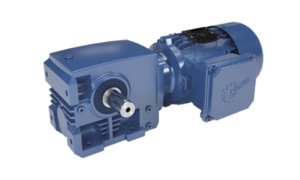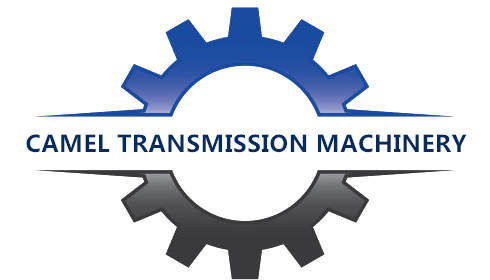Electric motor, commonly known as “motor”, refers to an electromagnetic device that realizes the conversion or transmission of electric energy according to the law of electromagnetic induction. It is represented by the letter “M” in the circuit (the old standard uses “D”). Its main function is to generate driving torque as a power source for electrical appliances or various machinery.

1. Ordinary DC motor
Ordinary motors are the ones we have in our daily life. They are included in electric toys, razors, etc. Generally, there are only two pins. Connecting the positive and negative poles of the battery to the two pins will cause it to rotate, and then connecting the positive and negative poles of the battery to the two pins oppositely, the motor will also reverse. This kind of motor has the characteristics of too fast speed and too small torque, and is generally not directly used in smart cars.
When the DC power supply supplies power to the armature winding through the brush, the current in the same direction can flow through the N-pole lower conductor on the surface of the armature. According to the left-hand rule, the conductor will be subjected to a counterclockwise torque. Current in the lower part of the S pole of the armature surface also flows in the same direction. According to the left-hand rule, the conductor will also be subjected to a counterclockwise moment. In this way, the entire armature winding, that is, the rotor, will rotate counterclockwise, and the input DC electrical energy will be converted into mechanical energy output on the rotor shaft. It consists of stator and rotor. Stator: base, main magnetic pole, commutating pole, brush device, etc.; Rotor (armature): armature core, armature winding, commutator, shaft and fan, etc.
A DC motor is a motor that converts DC electrical energy into mechanical energy. Because of its good speed regulation performance, it is widely used in electric drive. According to the excitation mode, DC motors are divided into three types: permanent magnet, separate excitation and self-excitation. Among them, self-excitation is divided into three types: parallel excitation, series excitation and compound excitation.
2. Geared motor
The geared motor is a common motor with a gearbox, which reduces the speed and increases the torque, which makes the common motor have a wider range of use space.
This kind of integrated body is usually also called a gear motor or a gear motor, and is usually supplied as a complete set after being integrated and assembled by a professional reducer manufacturer. Geared motors are widely used in the steel industry, machinery industry, etc. The advantage of using a geared motor is to simplify the design and save space. After the Second World War, the rapid development of military electronic equipment promoted the development and production of miniature geared motors and DC geared motors in the United States, the Soviet Union and other countries. With the continuous development of the geared motor industry, more and more industries and companies have used geared motors, and a number of companies have entered the geared motor industry.
Currently, Germany, France, Britain, the United States, China, South Korea and other countries maintain a leading level in the world’s micro geared motor and DC geared motor market. China’s miniature geared motor and DC geared motor industry was founded in the 1950s. Starting from meeting the needs of weaponry and equipment, it has gone through the stages of imitation, self-design, research and development, and large-scale manufacturing, and has formed product development, large-scale production, and key components. , Key materials, special manufacturing equipment, testing equipment, and other supporting complete industrial system with an increasing degree of internationalization.
Geared motors are generally used on smart cars, and the H-bridge solution is generally used for motor control. The L298 chip is this principle.
The speed regulation generally uses PWM (Pulse Width Modulation) mechanism. The single-chip microcomputer uses timer control to generate PWM waves with variable duty cycles or direct hardware PWM to output waveforms of different sizes to control the overall speed of the car.

3. Stepper motor
Stepping motor is an open-loop control element stepping motor that converts electrical pulse signals into angular displacement or linear displacement. In the case of non-overload, the speed and stop position of the motor only depend on the frequency and pulse number of the pulse signal, and are not affected by the load change. When the stepper driver receives a pulse signal, it drives the stepper motor according to the The set direction rotates at a fixed angle, called “step angle”, and its rotation runs step by step at a fixed angle. The angular displacement can be controlled by controlling the number of pulses, so as to achieve the purpose of accurate positioning; at the same time, the speed and acceleration of the motor rotation can be controlled by controlling the pulse frequency, so as to achieve the purpose of speed regulation.
4. Servo motor
Servo motor is also called executive motor. In automatic control system, it is used as an executive element to convert the received electrical signal into angular displacement or angular velocity output on the motor shaft. Divided into two major categories of DC and AC servo motors, its main feature is that there is no rotation when the signal voltage is zero, and the speed decreases at a uniform speed as the torque increases.
Servo motors mainly rely on pulses for positioning. Basically, it can be understood that when the servo motor receives 1 pulse, it will rotate the angle corresponding to 1 pulse to achieve displacement. Because the servo motor itself has the function of sending pulses, so the servo motor Every time it rotates one angle, a corresponding number of pulses will be sent out. In this way, it echoes the pulses received by the servo motor, or is called a closed loop. In this way, the system will know how many pulses have been sent to the servo motor and how many pulses have been received at the same time. Back, in this way, the rotation of the motor can be controlled very accurately, so as to achieve precise positioning, which can reach 0.001mm.
DC servo motors are divided into brush and brushless motors. Brushed motors have low cost, simple structure, large starting torque, wide speed range, easy control, and need maintenance, but the maintenance is inconvenient (changing carbon brushes), and electromagnetic interference is generated, which requires environmental requirements. Therefore, it can be used in common industrial and civil occasions that are sensitive to cost.
The above is about the introduction of ordinary motors, stepper motors, decelerating motors, and servo motors. I believe that everyone has a clearer understanding of these four motors after reading them. You can choose according to your needs when purchasing.
